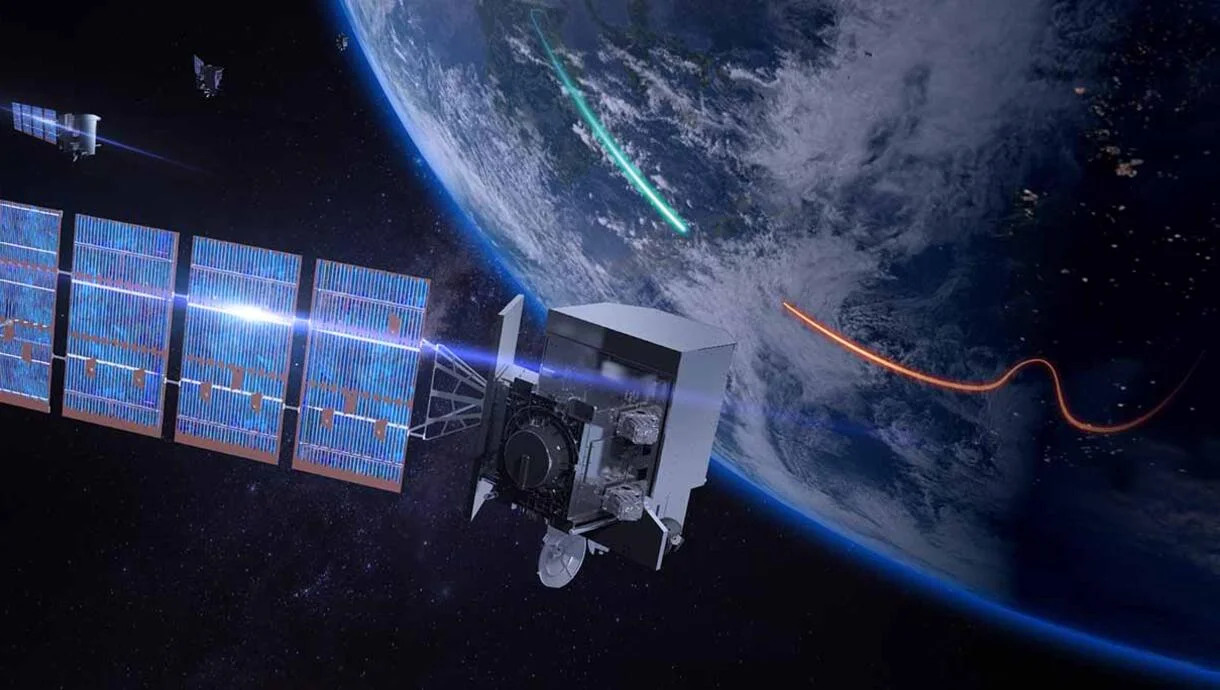Maxar will build 14 missile-tracking satellites for new warning system

Maxar Technologies will help build a U.S. missile-warning satellite system.
The Colorado-based company will supply 14 tracking satellites as a part of the Space Development Agency's (SDA) infrastructure in orbit to assist with U.S. anti-satellite weapon technology, Maxar announced Tuesday (Aug. 9). The satellites will be manufactured by 2024 for L3Harris Technologies, which along with Northrop Grumman are building the first two tranches of the SDA's constellation. Maxar's new announcement refers to the second batch of satellites, which L3Harris aims to launch in 2025.
Maxar officials stated that the low-Earth orbit satellites will assist with the SDA constellation's aims, which are to "provide limited global indications, warning and tracking of conventional and advanced missile threats, including hypersonic missile systems."
Related: What is a ballistic missile and how does it work?
Hypersonic weapons, which travel at speeds of Mach 5 or greater, are a goal of the United States military as well as international actors. In June, the U.S. hypersonic missile defense program narrowed down its hypersonic development scope to two prototypes manufactured by Northrop Grumman and Raytheon Missiles.
A congressional spending bill allocated an additional $550 million in fiscal 2022 to accelerate development of Tranche 1, the second set of satellites. The allocation happened as the SDA has been sounding alarms about Russian and Chinese development of hypersonic vehicles, and as the Defense Advanced Research Projects Agency (DARPA) is developing a hypersonic missile interceptor program.
SDA's missile-tracking system is now developing the Tranche 1 tracking layer, which will upgrade Tranche 0, a first set of 28 satellites that will launch with SpaceX starting in September.
Breaking space news, the latest updates on rocket launches, skywatching events and more!
For Tranche 0, eight tracking layer satellites will be used to detect threats and to send the information on to 20 tracking satellites, which can send the data they receive to a weapons platform, according to a 2020 Department of Defense release.
Like the initial constellation, Tranche 1 will also include 28 infrared sensor satellites now estimated to cost $2.5 billion, according to a SpaceNews report quoting an anonymous official from the Department of Defense. L3 Harris has a $700 million share of the SDA Tranche 1 contracts, which total $1.3 billion.
During a July briefing, SDA director Derek Tournear said that Tranche 1 will be the first set of satellites to target hypersonic maneuvering vehicles, and directly drew a link to Chinese and Russian activities.
"These satellites are specifically designed to go after that next-generation version of threats out there," he said, adding, "That's the capability we're bringing that's new."
Follow Elizabeth Howell on Twitter @howellspace.Follow us on Twitter @Spacedotcom and on Facebook.

Elizabeth Howell (she/her), Ph.D., was a staff writer in the spaceflight channel between 2022 and 2024 specializing in Canadian space news. She was contributing writer for Space.com for 10 years from 2012 to 2024. Elizabeth's reporting includes multiple exclusives with the White House, leading world coverage about a lost-and-found space tomato on the International Space Station, witnessing five human spaceflight launches on two continents, flying parabolic, working inside a spacesuit, and participating in a simulated Mars mission. Her latest book, "Why Am I Taller?" (ECW Press, 2022) is co-written with astronaut Dave Williams.
